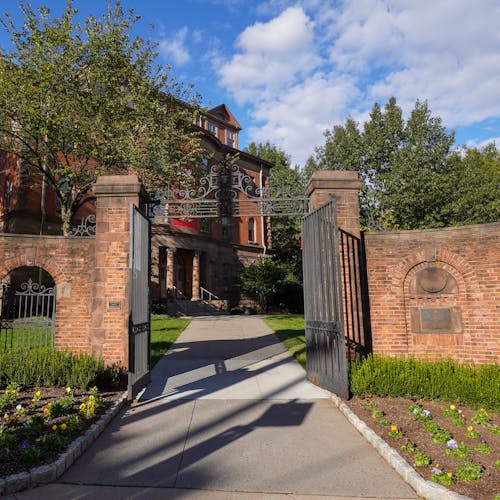BEZAWADA: Upbringing contributes to foundation from which we grow

Not far from New Brunswick and Piscataway is a large township called Edison. There are only three possible reactions to the above statement: you have definitely heard of it at some point and are probably groaning, you are hearing about it now or you are from Edison.
My family and I moved to Edison when I was 6 years old. Before then, we had lived in a tiny, quiet and mostly elderly white neighborhood. As they say, it takes a village to raise a child, and I definitely took after my community, albeit unironically. Nobody in the apartment complex ever appeared on their doorstep. I mirrored this. I enjoyed staying at home, and was rather distant socially.
The thing is, I never actually knew that until we packed our bags and headed for Edison. If you have been to Edison or are from there, you would know it is the complete opposite of small-town North Carolina. It is crowded, noisy and filled with disillusioned students navigating a normal childhood and scathing academic pressure, littered with potholes that have evaded taxpayers’ money for 27 years and the central gathering place of New Jersey’s rudest drivers. When we first moved into this town, I did not know whether to feel flattered or to break down crying each time some child pounded the door and called me out to play.
The sentiment extended inward. To this day, I still feel like the new kid on the block. I grew to enjoy spending time with my close friends, but I would always return home sooner than they did and wonder whether there was something wrong with me.
But no matter how frustrating, Edison remains my one and only home.
Edison possesses a strong and growing ethnic Asian population. A single white classmate in a room of 35 students was normal, and on many occasions, there were none at all. It came to the point that we ogled and teased schools visiting from afar on band trips or sports matches, which were vastly white. At one point, while watching a video of former President Franklin D. Roosevelt delivering a speech to a crowd in the 1940s, my U.S. history teacher joked about the sheer whiteness of the audience. The teacher was also white.
In any case, the arguably largest Asian demographic that makes up Edison's population is of Indian origin. And the tell-tale signs are everywhere. From the Hindu shrines and temples, to older ladies strolling down the streets in saris to “Ajay Driving School,” to the blazing firework displays during Deepavalli (the word for Diwali in my mother tongue), to the realtor signs advertising “east-facing homes,” the local Indian community has carved a home approximately 8,000 miles away from home. I had the fortune of being raised at the heart of my religion, culture and customary traditions. The familiarity of it all is just so nostalgic that I find myself both amused and proud. Unsurprisingly, this puts me in some unique situations.
I am an ambivert by nature. While I may be on the quiet side when I am first acquainted with someone, I am notoriously outspoken among my close friends. Attending large public schools in Edison would have been a nightmare if it were not for my upbringing so similar to that of my fellow Indian peers. It gave me something to talk about, relate to and derive mutual elation from. This holds especially true in the awkward years of high school when kids start questioning themselves, their identities and their futures. I was able to fall back on my familial background to give me the steady boost I needed to keep moving forward.
But the most interesting situation came with applications. All of them possess a question along the lines of: “Describe a challenge you have faced regarding diversity.” How do I explain the first time I stepped foot in a white family’s house and the low-burning shock that I did not have to remove my shoes? Knowing instantly when a teacher or cashier was about to say my name, and interrupting them before they grossly mispronounced it? Correct my world history teacher of a textbook misconception in the Hindu faith? Show that “curry” is not the only food India is known for? That yoga is an ancient Indian tradition, not a modern fad many trends are ripping off?
These doubts do not seem as earth-shattering as a “challenge” connotes. Nor does the meaning of culture to a shy kid seem that significant. But the hectic noise of my community, and the positive and negative circumstances I encounter along the way, are all pieces of what I call home. And I would not have it any other way.
Sruti Bezawada is a Rutgers Business School and School of Arts and Sciences sophomore double majoring in marketing and communications and minoring in Japanese. Her column, “Traipse the Fine Line," runs alternate Wednesdays.
*Columns, cartoons and letters do not necessarily reflect the views of the Targum Publishing Company or its staff.
YOUR VOICE | The Daily Targum welcomes submissions from all readers. Due to space limitations in our print newspaper, letters to the editor must not exceed 500 words. Guest columns and commentaries must be between 700 and 850 words. All authors must include their name, phone number, class year and college affiliation or department to be considered for publication. Please submit via email to [email protected] by 4 p.m. to be considered for the following day’s publication. Columns, cartoons and letters do not necessarily reflect the views of the Targum Publishing Company or its staff.



